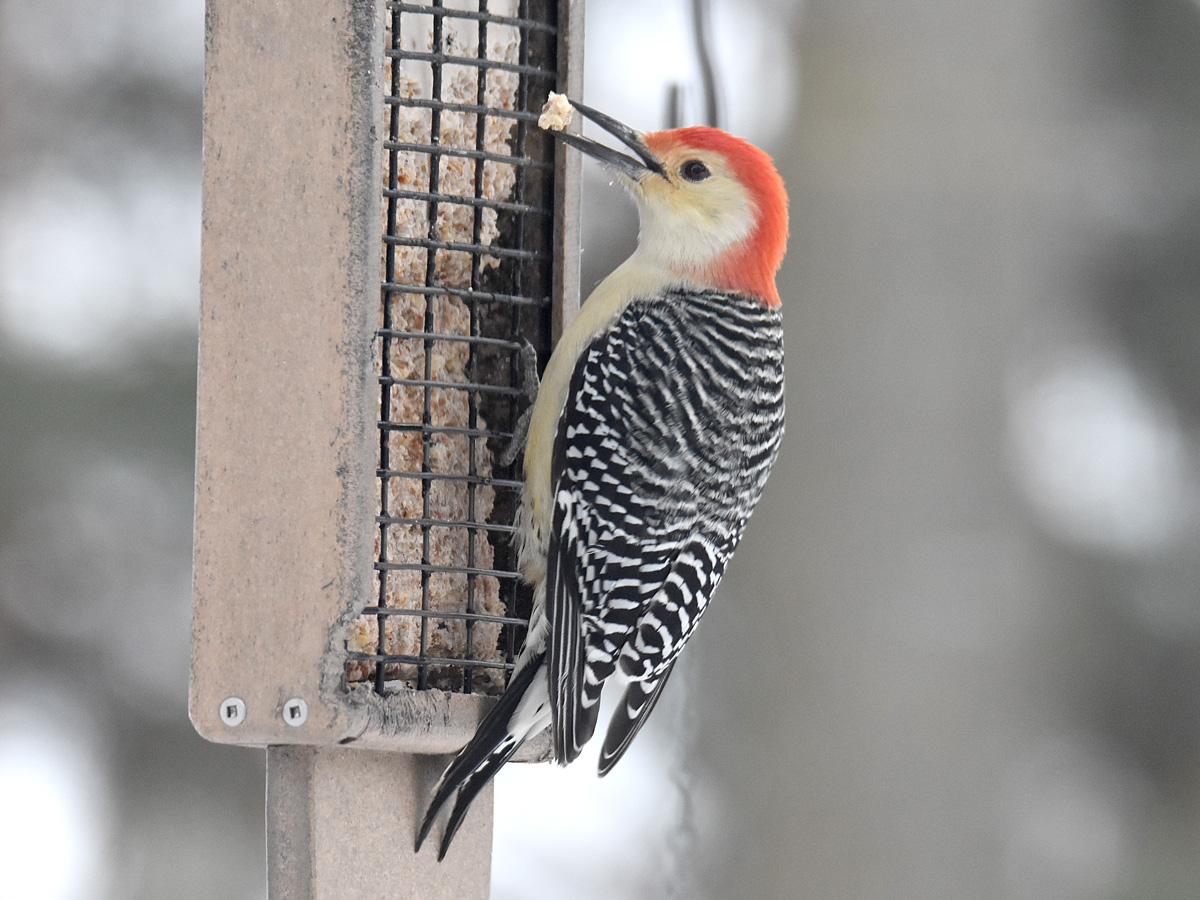Native Woodpeckers in Florida: An Overview to Types and Behaviors
Native Woodpeckers in Florida: An Overview to Types and Behaviors
Blog Article
Introducing the Keys of Woodpeckers: Behavior, Habitat, and A Lot More
Woodpeckers, with their distinct behaviors and specialized adaptations, have long attracted scientists and nature fanatics alike. These impressive birds have a variety of appealing keys that dropped light on their survival strategies, environment preferences, and elaborate communication approaches. By discovering the enigmas bordering woodpeckers' actions and environment options, a deeper understanding of these avian wonders emerges, supplying a peek into their remarkable globe. What makes these birds absolutely remarkable, and just how do they browse their setting with such precision and skill? Allow's discover the exciting realm of woodpeckers and decipher the enigmatic information that make them such intriguing subjects of research.
Woodpecker Habits Insights
In taking a look at woodpecker actions, a fascinating display of specialized skills and adjustments arises, clarifying their exceptional environmental niche - Woodpeckers in Florida. Woodpeckers, known for their distinct drumming on trees, possess a range of behavior attributes that add to their survival and success in their environment. One essential actions is their drumming, which offers several objectives such as communication, developing region, drawing in friends, and situating food resources. This balanced pecking likewise showcases their impressive strength and endurance, as they can hammer away continuously at broadband without triggering injury to themselves.
Furthermore, woodpeckers display a special feeding behavior defined by their capacity to essence insects from tree bark using their specialized beaks. Their long, barbed tongues help in catching target, while their solid neck muscle mass provide stability and precision throughout pecking activities. This feeding technique allows woodpeckers to gain access to hidden insect larvae and remove them with impressive efficiency.
Habitat Preferences and Option
What factors influence the environment preferences and choice of woodpeckers? One critical element affecting woodpecker environment selection is the availability of appropriate nesting websites. Woodpeckers generally like forests with a mix of mature trees that offer sufficient chances for cavity excavation.
Furthermore, woodpeckers show a choice for habitats with an abundant supply of food resources. They are mostly insectivorous, feeding upon beetles, ants, larvae, and various other bugs found in decaying wood or tree bark. Therefore, woodpeckers have a tendency to prefer wooded locations with a diverse insect populace to satisfy their dietary needs.
Moreover, the presence of dead or worn out trees is another essential aspect in woodpecker environment option. These trees not just supply food sources but also supply ideal substrate for dental caries excavation. Dead trees are essential for the maintenance of healthy and balanced woodpecker populations, as they play a vital duty in find the woodpeckers' life cycle and ecological community characteristics.
Feeding Behaviors and Diet Regimen Structure
Woodpeckers show a specialized feeding actions focused on foraging for bugs within numerous habitats. In addition to pests, woodpeckers likewise eat tree sap, fruits, nuts, and seeds, including selection to their diet regimen depending on the season and accessibility of food sources.
The foraging techniques of woodpeckers are well-adapted to their arboreal way of life (Woodpeckers in Florida). Their ability to excavate wood not only supplies them with food but also helps in developing nesting tooth cavities and establishing territories. Woodpeckers play a critical duty in maintaining the health and wellness of woodlands by controlling insect populations and assisting in the decay of timber. Recognizing their feeding practices and diet regimen structure is important for conservation efforts focused on preserving these unique and important birds.
Drumming Appears and Interaction
Making use of rapid drumming audios on various surface areas, woodpeckers utilize a distinct form of communication to signify territory borders and bring in companions. This drumming habits is not just a means of communication but also functions as a way for woodpeckers to establish their presence within a specific area. The intensity, speed, and pattern of the drumming can convey important details to other woodpeckers around.
Woodpeckers utilize drumming noises to announce their visibility in an area and to alert off potential intruders. The loud and repeated nature of the drumming functions as click a clear signal to other woodpeckers that the area is already declared. This assists in minimizing problems and lessening physical conflicts between individuals.

Survival Adaptations and Specialized Composition

Verdict
In verdict, woodpeckers exhibit distinct habits, such as drumming sounds for interaction, and have actually specialized composition for survival in their selected environments. Their feeding behaviors and diet plan structure further show their versatility to various atmospheres. By understanding these elements of woodpeckers, researchers and preservationists can better shield and maintain these interesting birds and their ecosystems.
Report this page